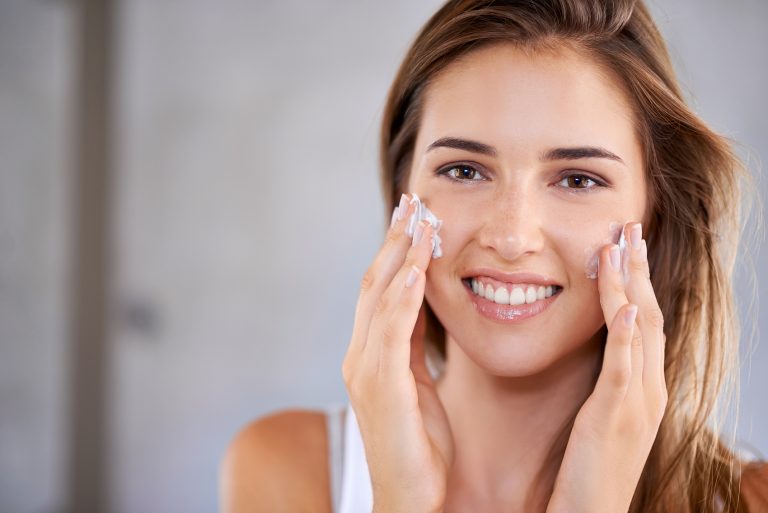One of the most personal and crucial steps I take with my clients is finding the perfect foundation match. The process of shade matching is very hands-on.
I don’t rely on just swatching on the wrist or back of the hand, as these areas often don’t match the face perfectly. Instead, I apply swatches along the jawline, blending down toward the neck. This approach helps me see how the foundation blends with the skin and how it looks against the slightly different tones of the neck.
A foundation might look great in one light or on one part of the body, but if it doesn’t suit the overall look, it’s not the right one. Here are some tips to help you find your perfect foundation match.
Where to Start?
The first step is understanding your skin’s undertone. Undertones are the subtle colors beneath the surface of your skin that affect its overall hue. They generally fall into three categories: warm, cool, and neutral.
- Warm undertones have a golden, peachy, or yellow tint, giving the skin a warm glow.
- Cool undertones have hints of pink, red, or blue, giving the skin a rosy or porcelain appearance.
- Neutral undertones are a balance between warm and cool, allowing for versatility in color choices.

How to Find Your Undertone?
The Vein Test:
Look at the veins on the inside of your wrist. If they appear blue or purple, you likely have a cool undertone. If they look greenish, you probably have a warm undertone. If it’s hard to tell and they seem to be a mix of both, you might have a neutral undertone. This test is a great starting point for choosing makeup and clothing colors that complement your natural hues.
The Jewelry Test:
Consider how different jewelry affects your skin tone. Silver jewelry tends to highlight cool undertones, making the skin look more vibrant, while gold jewelry enhances warm undertones. If both metals look good on you, you’re likely neutral, giving you more flexibility in your wardrobe and makeup choices.
The White Fabric Test:
Hold a piece of white fabric next to your face. If your skin appears to have a pinkish reflection, you likely have cool undertones. A yellowish cast indicates warm undertones. If the fabric doesn’t noticeably change the appearance of your skin, you’re probably neutral, giving you a versatile canvas for a wide range of colors.

Shades for Every Skin Tone
Light Skin Tones:
Avoid shades that wash you out or give your skin an unnatural tint. Look for foundations with slight golden or peach undertones to add warmth and vitality, helping you achieve a natural, healthy glow.
Medium Skin Tones:
You have the advantage of a wide range of suitable shades. Choose a foundation that matches your undertone to avoid dullness. For warm undertones, golden or honey shades work well, while cool undertones look great with a slight rose tint, giving a fresh and awake appearance.
Dark Skin Tones:
Dark skin tones can be complex, so it’s important to find brands that offer a variety of deep shades to match your undertone. The right foundation will enhance your skin’s natural depth and warmth, avoiding any ashy or flat looks, and instead celebrating your skin’s inherent beauty.
The Role of Lighting
Lighting plays a significant role in how foundation appears on your skin. Natural light offers the most accurate representation, so always test your foundation in a well-lit area or outdoors. Swatching along your jawline helps ensure the foundation matches both your face and neck, creating a seamless and natural look under any lighting.

Final Thoughts
Foundation is the base that sets the tone for your entire look, and finding the right shade is a process unique to each person. Don’t worry if it takes a bit of trial and error to find your perfect match. Over time, you’ll discover shades that feel like they were made just for you. And remember, having the right tools, like brushes and sponges, can make a big difference in achieving that flawless finish.






